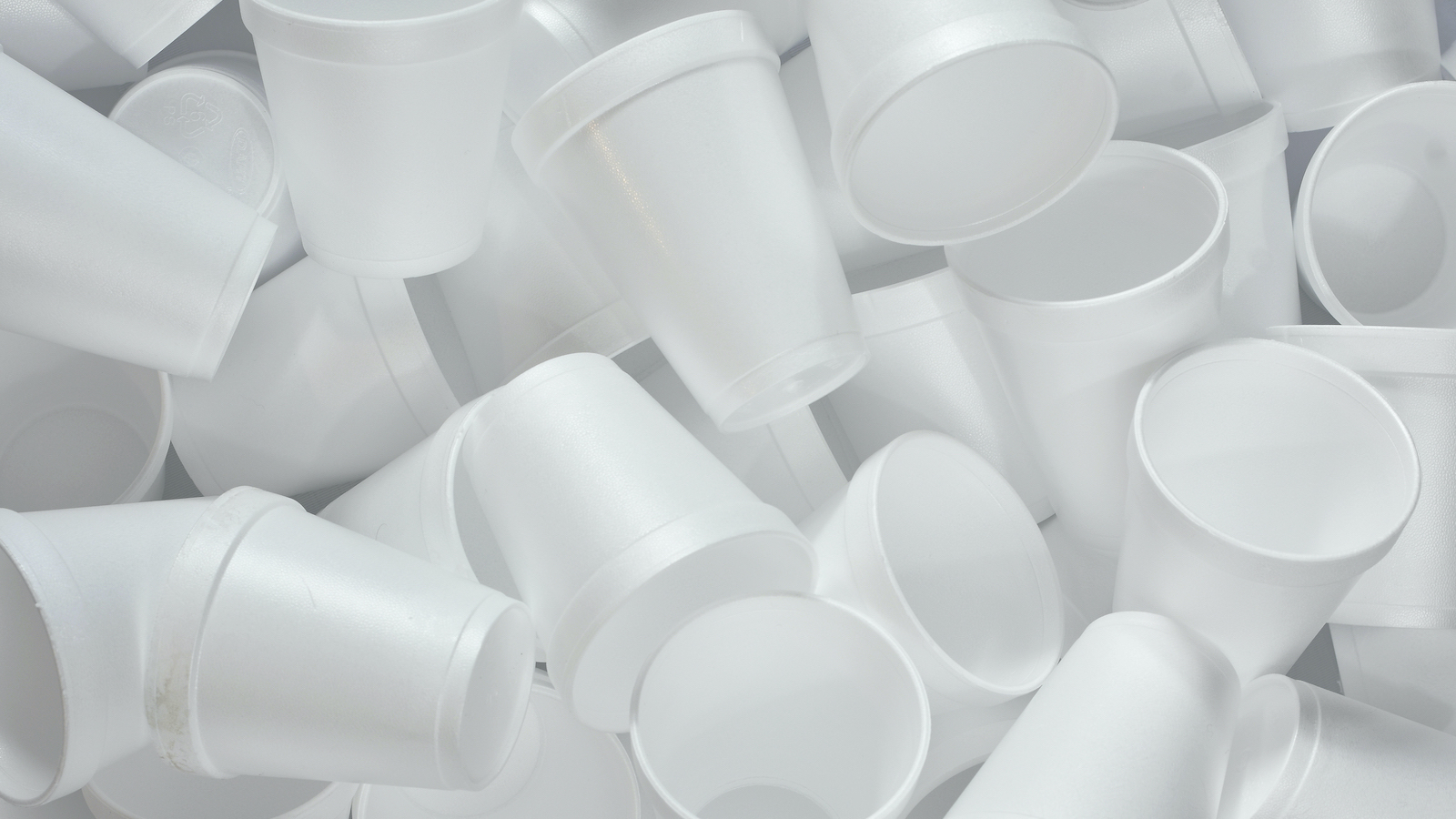
Tell Sonic Drive-In: Phase out foam containers
That plastic foam cup might have a recycling symbol on it, but can it actually be recycled? Get the facts on recycling foam cups and food containers.
Take Action
You see the stuff everywhere. The foam cup your coffee comes in. The foam clamshell container that’s holding your takeout order.
Many people commonly (but mistakenly) call this material “Styrofoam.” It’s actually a material known as “expanded polystyrene foam” — often shortened to EPS by recycling guides and waste management companies.
During manufacturing, hard plastic beads are heated and expanded into a super-lightweight foam that’s 98% air and can be used to make disposable cups, containers, packing peanuts and much, much more.
Many people also think these foam products are recyclable — after all, we’ve all seen that raised “chasing arrows” recycling symbol on the bottom of a foam cup or container indicating that it must be. But just how recyclable is plastic foam?
Technically, yes — but don’t toss that foam cup in your blue recycling bin just yet. There are a number of factors that make recycling polystyrene foam incredibly difficult. Here are the facts:
Polystyrene foam is hard to recycle, and as a result, tons of it are ending up in landfills and polluting our environment.
You can help us get rid of polystyrene foam cups by adding your name to our petition today.
Fast food chain Sonic still sells its food in polystyrene containers that fuel the plastic pollution crisis and threaten our health.
Take Action
To be clear, all plastic is bad for the environment. It’s made from fossil fuels and it takes hundreds of years to decompose. Since we started mass-producing plastic 60-some years ago, we’ve made more than 8.3 billion metric tons of the stuff, only 9% of which has ever been recycled. The rest of it has either been incinerated (dirtying our air) or is still out there in some form, clogging our landfills, littering our communities or polluting our environment.
But polystyrene foam is particularly bad:
Polystyrene foam cups have become the calling card of our single-use convenience culture. We pick them up at drive-through windows and to-go counters and throw them away not long after — fast and easy.
But as we know, the plastic foam cups we throw away don’t really go away. And it simply doesn’t make sense to continue using them when more sustainable options are available. That’s why PIRG has been calling on fast food chains to stop handing out polystyrene foam cups.
With more than 3,500 locations in the U.S., Sonic Drive-In can begin to shift the fast food industry in a more sustainable direction by phasing out its iconic polystyrene foam cups. Tell Sonic to stop serving food and beverages packaged in polystyrene foam.
Fast food chain Sonic still sells its food in polystyrene containers that fuel the plastic pollution crisis and threaten our health.
Take Action
Janet has been the executive director of MASSPIRG since 1990 and directs programs on consumer protection, zero waste, health and safety, public transportation, and voter participation. Janet has co-founded or led coalitions, including Earth Day Greater Boston, Campaign to Update the Bottle Bill and the Election Modernization Coalition. On behalf of MASSPIRG, Janet was one of the founding members of Transportation for Massachusetts (T4MA), a statewide coalition of organizations advocating investment in mass transit to curb climate change, improve public health and address equity. Janet serves as Chair of the Board of Directors for the Consumer Federation of America and serves on the Common Cause Massachusetts executive committee, Alliance for a Healthy Tomorrow board of directors, and Department of Environmental Protection Solid Waste Advisory Committee. For her work, Janet has received Common Cause’s John Gardner Award and Salem State University’s Friend of the Earth Award. Janet lives in Cambridge, Massachusetts, with her husband and two sons, and every Wednesday morning she slow-runs the steps at Harvard Stadium with the November Project.
